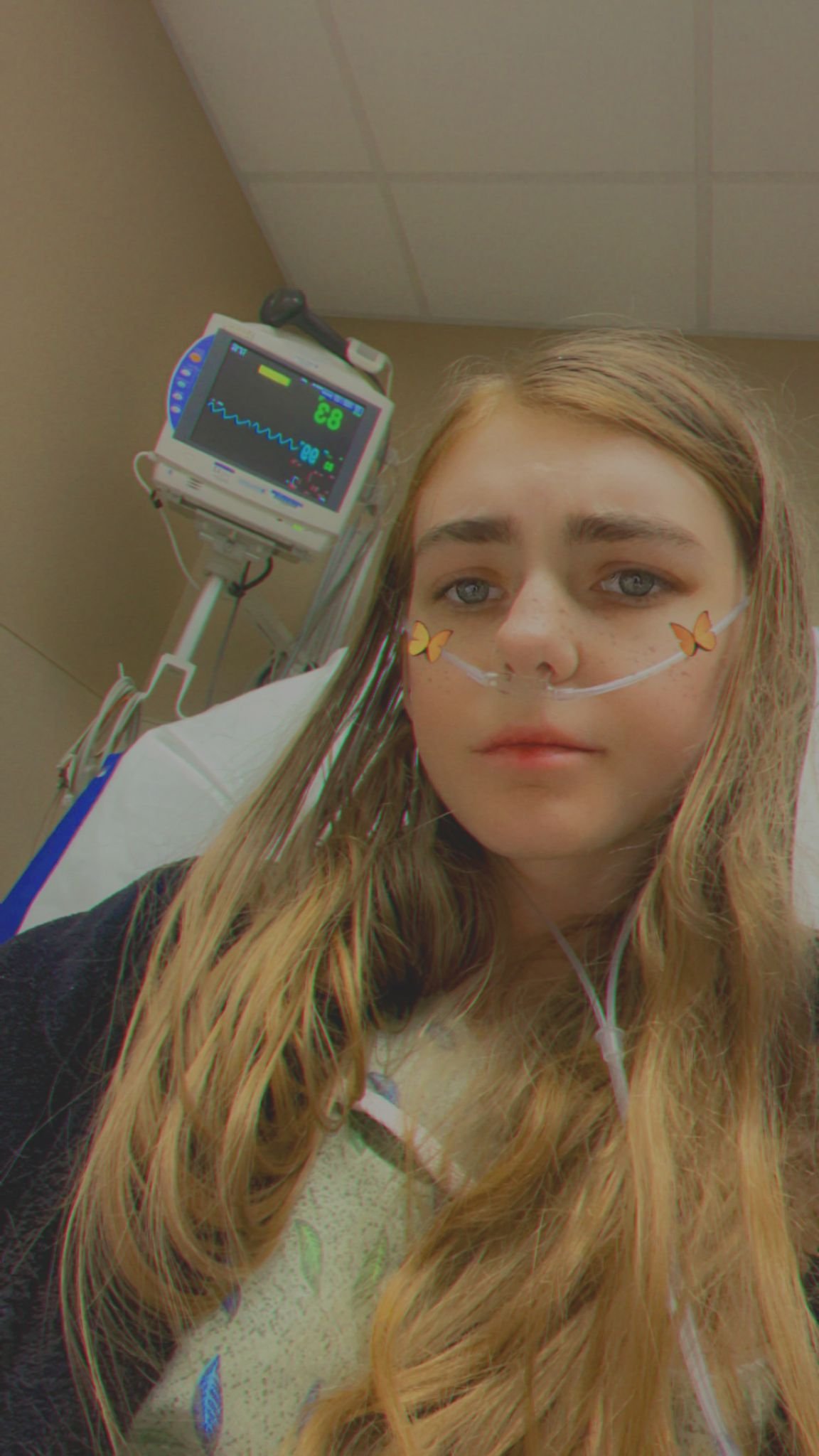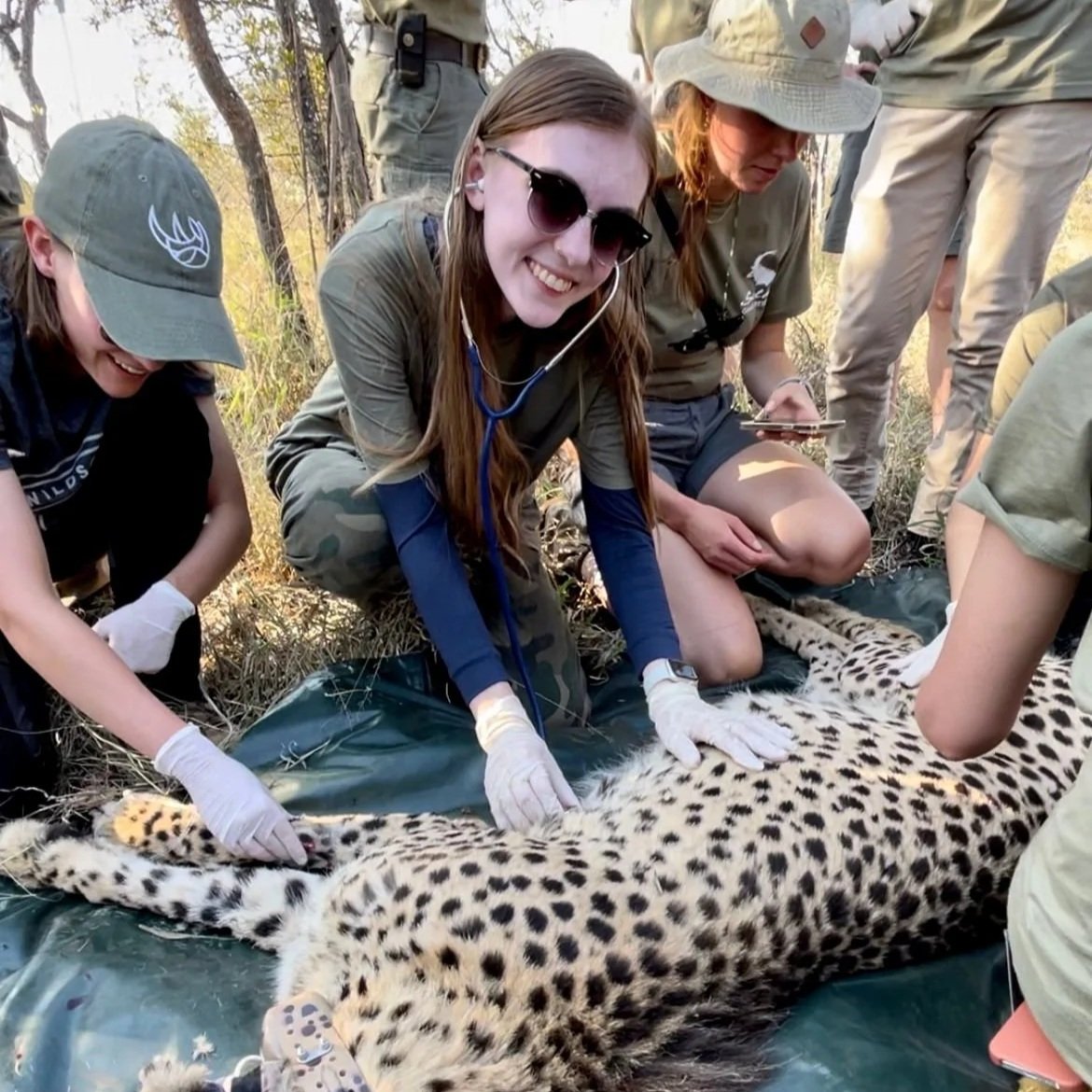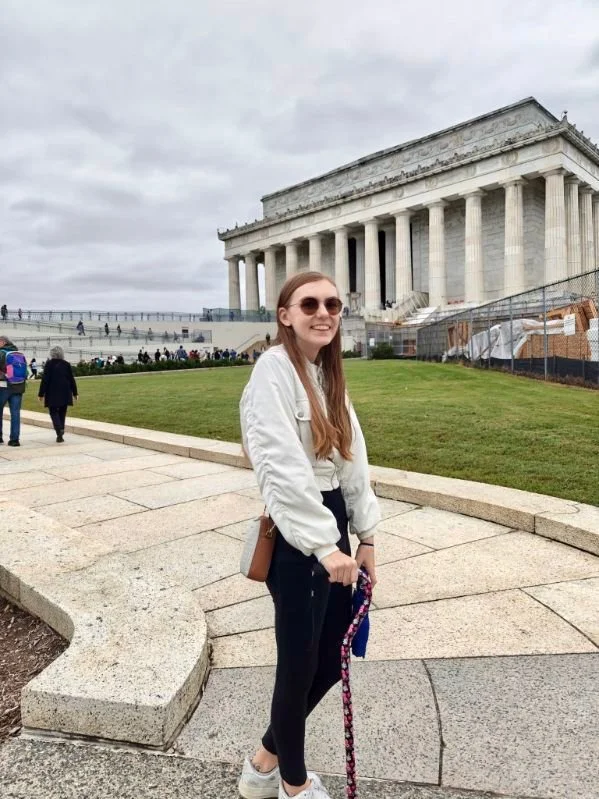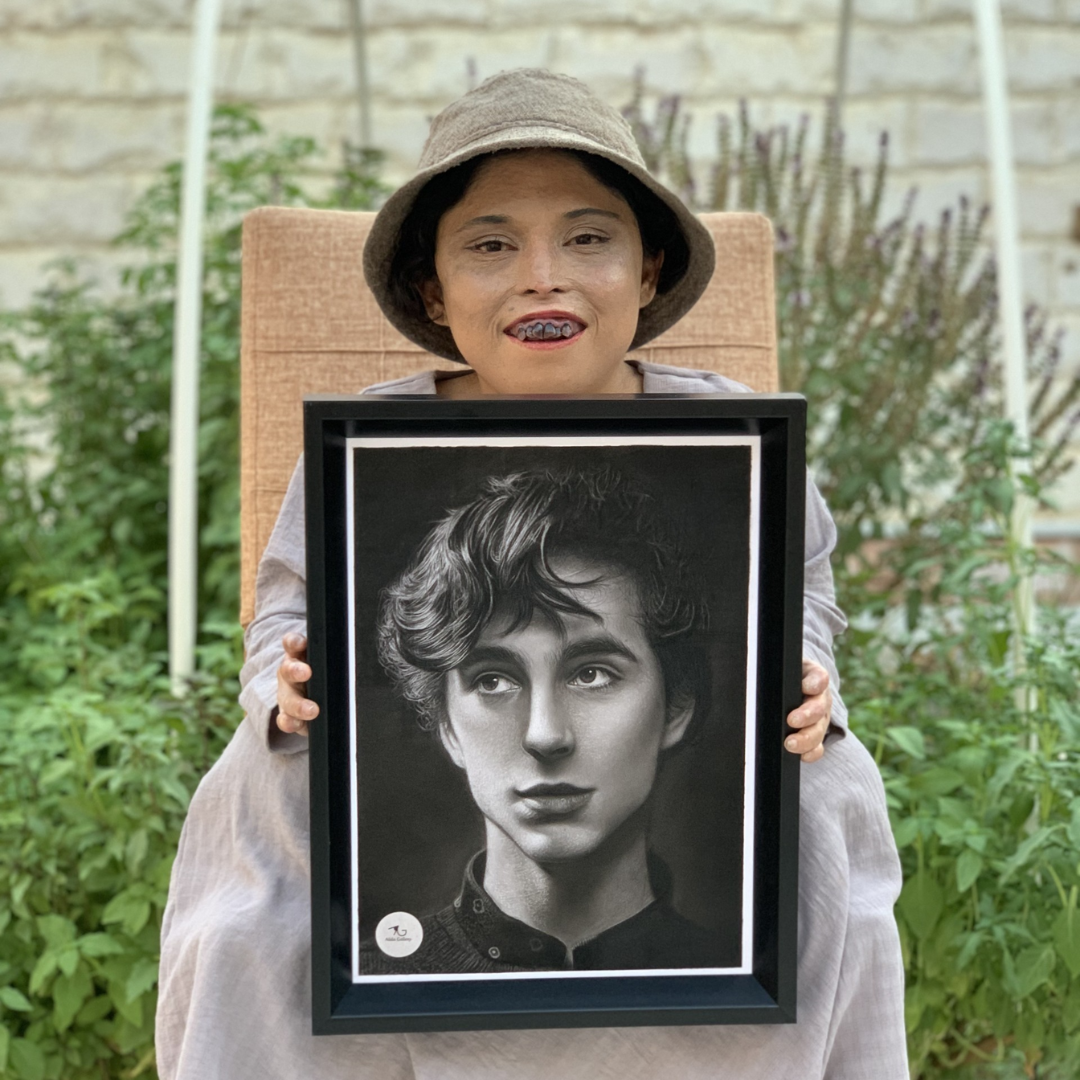Meet Michelle M., AIP Warrior
By Michelle Meaney
"Most people compare their health journey to a roller coaster. Mine? More similar to a Tilt-a-Whirl"
-Michelle, AIP patient.
Hey, I’m Michelle, and I was diagnosed with acute intermittent porphyria 3 months ago. I’m still learning what that means for my life, but I wanted to share the story of my diagnosis journey—for anyone who feels lost, scared, confused, hopeless, or invisible, like I did.
Most people compare their health journey to a roller coaster. Mine? More similar to a Tilt-a-Whirl, individual cars spinning unpredictably on an uneven turn table, which is also spinning. You’re here, then you’re there, round & round, and just when you think things stabilize, your car goes spinning around again, flung sideways back into the chaos - sometimes less violently, sometimes more.
I am 23, but since the time I was a young teenager, I have struggled with various health problems that have been diagnosed as several different things, each one adding on to the others. I collect diseases and conditions the way others collect coffee mugs or keychains.
To use yet another carnival metaphor, my life has been like Whack-a-Mole – treat one set of symptoms, another would develop. First came the unexplained seizures at 14 years old, then mental health issues that turned out to be part due to ADHD and part a negative reaction to the seizure medication they put me on. Then came the bouts of nausea & weight loss (17 yrs old), vertigo & double vision (18 yrs old), struggles with rapid heart rate, fainting, sweating, extreme fatigue, headaches, & pain (20 yrs old).
Michelle at the hospital.
I barely managed to finish high school and in Spring of 2021 I started working toward my Vet Tech degree, as well as working an internship at a mixed-practice veterinary clinic while dealing with a lot of these symptoms but, the summer heat + physical labor lifting heavy items about did me in. I tried pushing through the pain with lidocaine patches, heating pads, OTC medications, and a back brace, all while blaming it on the job and my own weakness. But by fall 2023, the pain became unbearable. And that was actually the beginning. Weeks passed and the extreme pain wouldn’t leave. I was again told I was either drug-seeking, purposefully starving myself, or suffering from psychosomatic disorder – they couldn’t or wouldn’t do anything for me. I felt invisible and I didn’t know what to do after having my struggles ignored for so long. I decided to call my mom and we made a plan.
I moved to Arizona in early 2024. More ERs. More dismissal. “Your tests all look fine.” I was prescribed stronger OTC meds & muscle relaxants that did absolutely nothing. I was then referred to pain management which gave me steroid injections and a nerve ablation. However, the relief from that only lasted 7 months. After which the pain utterly exploded—every joint from my toes to my knees, to my vertebrae felt like it was either being stabbed or crushed with a sledgehammer, never letting up. Back to the ER, thistime they gave me opioids but they didn’t help much, either, and weren’t given consistently, causing more issues. Only hot water gave me any sense of relief, I lived in baths & hot tubs. I was losing hope I’d ever feel better or live a normal life because I started to believe them that I was crazy and somehow doing this to myself. I mean, how else could all the tests keep coming back normal? It was a living hell at this point.
I never felt like eating, the pain was so bad and when I could force something down, I’d just throw it back up. I got down to about 84 pounds at my lowest (I’m 5’8”). My parents (who had been taking care of me and trying every kind of pain treatment out there from seeing holistic doctors & trying acupuncture/massage-type treatments to whatever tests western medicine would throw at me) drove me to the ER at the Mayo Clinic, about 90 minutes away from where we live in AZ. During this time, the pain was so bad that car rides were almost impossible, every tiny bump or turn in the road felt like being shot & I wasn’t sure I’d even make it there but somehow I did. Once there, they figured out that my sodium levels were dangerously low and admitted me overnight to stabilize them and then referred me to a POTS specialist – it was October 5, but the first available specialist appointment, mid-December. Those months waiting were brutal. My cats and caregivers kept me going.
Old Michelle being active.
Gradually the pain began to lessen but, in its place came muscle weakness and paralysis in my arms, starting with my hands/wrists. When we finally did see the POTS specialist in December, this was a puzzling and troubling symptom, as it was not related to what they had diagnosed me with: postural orthostatic tachycardia syndrome (POTS).
However, that WAS the cause of my dysautonomia. Add another condition to my collection! They put me on medication to help prevent the dizziness and fainting, but the paralysis was still a total mystery & I was fading away, unable to do anything for myself.
My muscles weakened more. I couldn’t walk without help. We had to get a wheelchair. I started forgetting words mid-sentence—I was terrified I was losing my mind, or dying, and no one believed me or could figure out why but I was still being sent home with mild pain meds and misdiagnoses, hearing things like ALS, EDS, & cancer being thrown around but never the answer.
In January 2025, I was referred to a neuromuscular specialist at Mayo, who ran every test imaginable. It took 4 months to get through the MRIs, nerve conduction studies, a lumbar puncture, blood/urine tests, etc. My mom and medical advocate has a 2-inch binder of printed test results, labs, scans. It helps lend a sense of seriousness to new doctor appointments.
All came back pretty much normal. I started physical and occupational therapy 5 days a week to get my body back. My life was nothing but going to different doctors appointments but I refused to give up. In June 2025, 1.5 years after moving and beginning this diagnosis journey—about to give up, my doctor at Mayo said, “Hmm…I'm thinking about one other thing…it's so rare that I’ve never even seen a clinical case of it, but let’s go ahead and test for it, just in case”. A blood test. A simple, basic blood test, after everything I had been through, detected the culprit: Acute Intermittent Porphyria (AIP). I looked it up. Seizures. Pain. GI issues. Autonomic dysfunction. Paralysis. I checked every box. It was all connected. All real. All explainable.
Michelle speaking at the Patient & Family Conference Day in Washington DC.
Porphyria is a rare genetic blood disorder causing a problem with the production of hemoglobin, triggered by stress, hormones, certain medications, even fasting. I had it. And it had me.
When the results came back, I cried—not because I understood what AIP was, but because someone finally saw me. I still can’t believe the answer was that simple: everything coming and going mysteriously I now know were just flares of AIP. I am grateful to my doctor at Mayo for not giving up, and testing the edge case or I would still not know what caused all my issues or what to do if they came back.
The challenge now is to disentangle what caused my flareups, how to deal with/avoid them in the future, in addition to understanding what helped most - did occupational and physical therapy help or did the AIP flare just end? Do I have epilepsy and POTS or are those just AIP symptoms? Time will tell.
Living with chronic illnesses feels like being trapped in a body that has its own rules or like being haunted by a ghost that only shows itself when you least expect it. I learned to fear my own body. I stopped drinking alcohol. I’m careful with my sleep schedule. I workout religiously and scrutinize every medication, keeping a list of “safe” drugs in my phone. I worked on my diet & eating regularly, even when I wasn’t hungry, terrified that skipping a meal might spark another attack. I read every label now like it’s a survival manual. I’m having to slowly learn what triggers an attack for me—stress, weather, certain medications & foods, fasting, even my hormones/menstrual cycle. But the hardest part? Feeling alone. AIP is rare. Most doctors haven’t seen it. Friends don’t understand why I cancel plans or why I’m exhausted after doing “nothing.” I’ve had people say, “You look fine,” and I want to scream, “You don’t see the war inside me.”
That’s why support groups & surrounding yourself with understanding people matters SO much - the conference in DC was the first place I felt truly accepted and understood, as being diagnosed with acute intermittent porphyria (AIP) is like navigating a storm that strikes without warning—scary, confusing, painful, isolating, & deeply misunderstood. It can be very hard not to drown in it all. Meeting people who know what it’s like to fear your own body and who’ve taught me how to advocate for myself, how to prepare for an attack, how to live—not just survive are critical. I feel so lucky to have connected with others that have porphyria through the UPA. To hear the stories of others has been an inspiration for me. FINALLY, things are starting to make sense, unrelated symptoms WERE related, and EVERYTHING I had been going through was real, had a name, and a cause - from the epilepsy to POTS to the mental health struggles, to osteoporosis & hemochromatosis. The hardest part isn’t the pain—it’s the invisibility. People don’t see the battle. They see me smiling at work, not the hours I spent in bed beforehand, willing my legs to move. They hear “rare disease” and think “exaggeration.” I’ve lost friends who couldn’t understand why I canceled plans at the last minute. I’ve missed birthdays, weddings, trips, funerals, jobs, vacations, graduation - life.
“I have people who check in. I have hope. AIP hasn’t broken me. It’s reshaped me.”
-Michelle, AIP patient.
But I’ve also found strength. I met others who knew the language of pain and fear. We shared stories, tips, and tears. I found a doctor who listens. I found my voice. Now, when the storm comes, I’m ready. I have mobility aids & pain management tools at my home, as well as being able to get hematin from the ER. I have people who check in. I have hope. AIP hasn’t broken me. It’s reshaped me. I live slower, deeper. I cherish the quiet days. I celebrate the pain-free mornings.
“I’ve learned that resilience isn’t loud—it’s
the whisper that says, ‘You’ve survived the storm again.’”
I still get scared. I still cry. I still struggle with the loss of all those years, connections, opportunities, and things I’ll never be able to do again or get to experience in the first place; as well as with learning what my new normal is and not to push myself too hard to be my old self again. Mourning the loss of who you were/wanted to be so badly has been a really tough thing for me; having had to change career goals multiple times but I am SO glad to have made it through to the other side of this disease and I’m also stronger than I ever knew. AIP didn’t ask for permission to enter my life, but I get to choose how I respond. I choose to speak & connect. I choose to follow my dreams & have hope. If you’re newly diagnosed, please know: you’re not alone. We see you. We believe you. And we’re here to walk this path with you. Now I’m healing. I’ve regained use of my hands. I’m back in vet school online. I get monthly Giovarsin injections. I go to PT twice a week. I’m learning what helps, what hurts, and what’s truly mine versus what AIP mimics. I still grieve the years lost, the dreams deferred, the identity I had to let go of.
But I’m here. I’m alive. I’m rebuilding. Connecting with others through the UPA has changed everything. Their stories gave me hope. And now, I share mine—for anyone still spinning alone on that ride or trying to keep their head above water during a dark storm. You’re not crazy. You’re not alone. You’re not imagining it. Don’t give up - Keep going.
Michelle’s inspiring story.
Want to share your story? Contact us at katri@porphyria.org
















